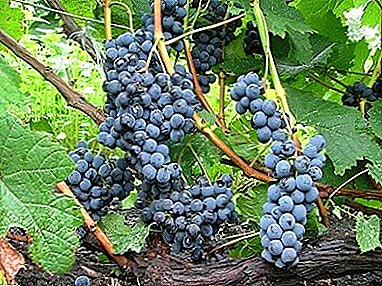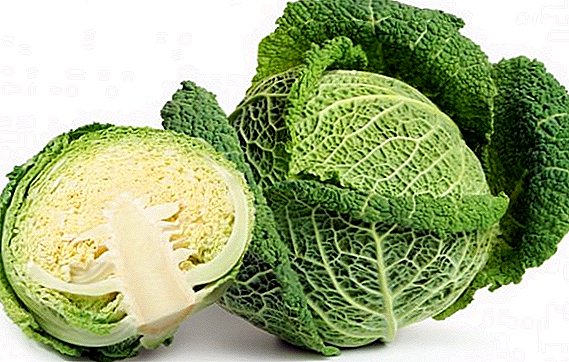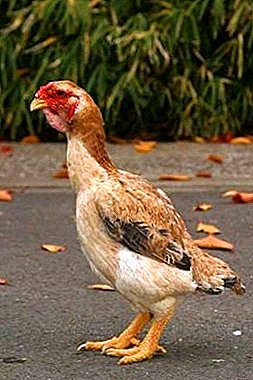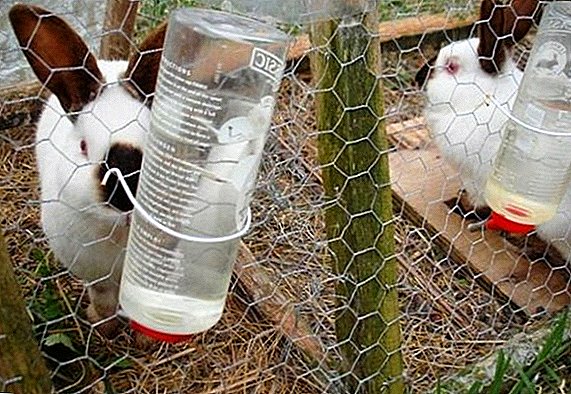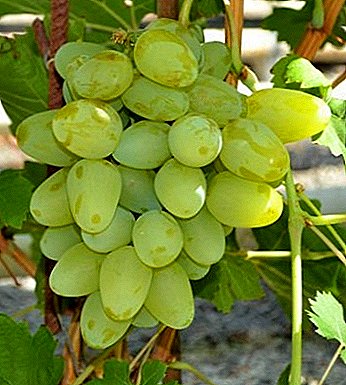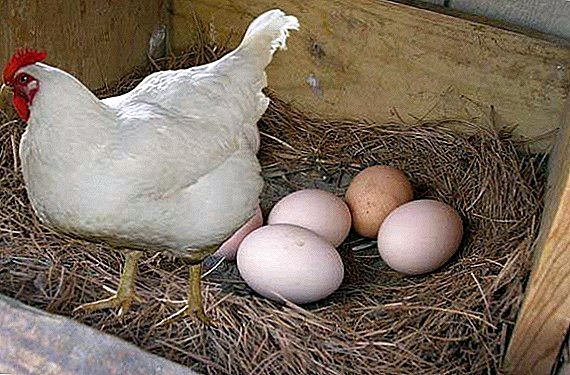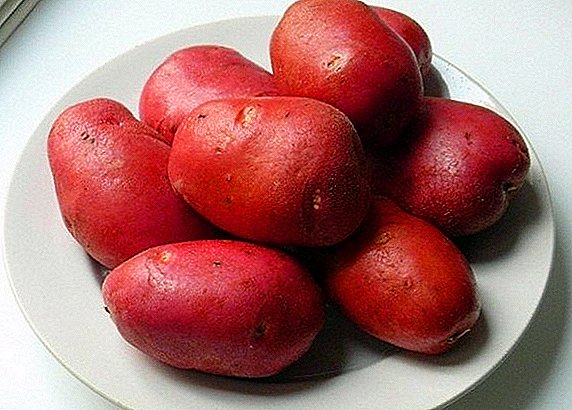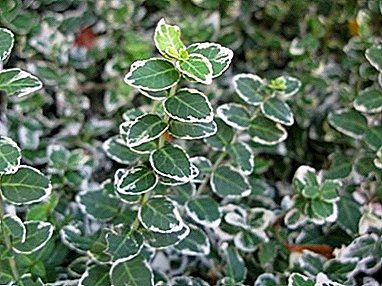
In the device of landscape design, certain types of shrubs occupy a special place due to their botanical features.
These include the evergreen "Forchun Euonymus" - one of the representatives of unpretentious, distinguished by the special beauty of plants, gaining popularity among professionals and fans of decorative flora.
General description of the plant
China is considered to be the birthplace of this small shrub. It has a dense openwork crown with small leathery leaves of variegated or green color.
The branches are very longable to climb on a support, but the height of the bush itself does not exceed 60 cm. The plant has varieties of different frost resistance, some of them withstand a not very severe winter.
Because of the properties of the branches of "Eosklet" to grow on the sides, it is used as a ground cover shrub. They try to plant in large dense groups and ribbons with different widths.
It is perfectly combined with spruce, thuja, juniper, and plays the role of background for them. In the home garden looks great among groups of plants and mixed compositions, stripes of various shrubs, landscapes with stones and alpine hills.
A photo
The photo shows the Forchun Euonymus: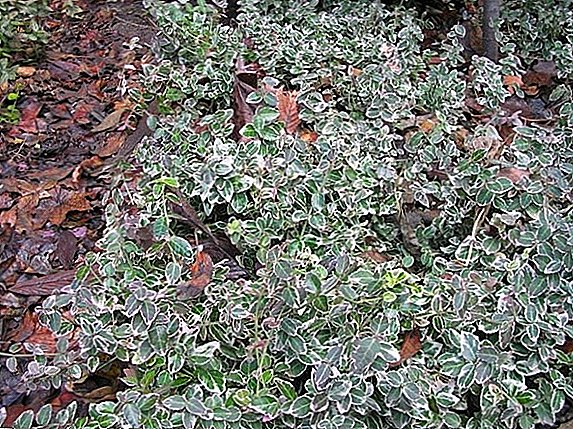

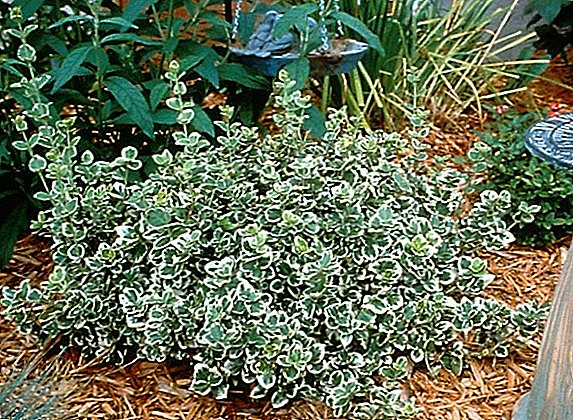
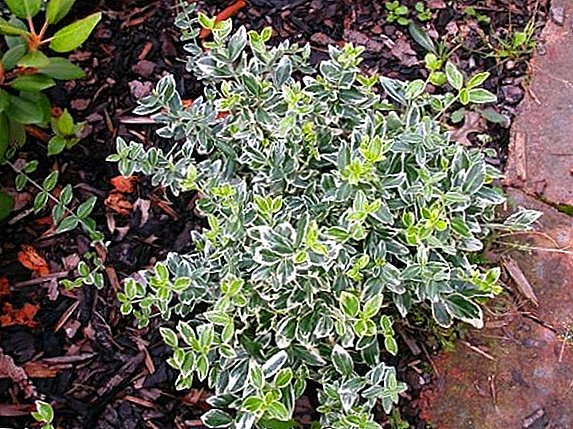
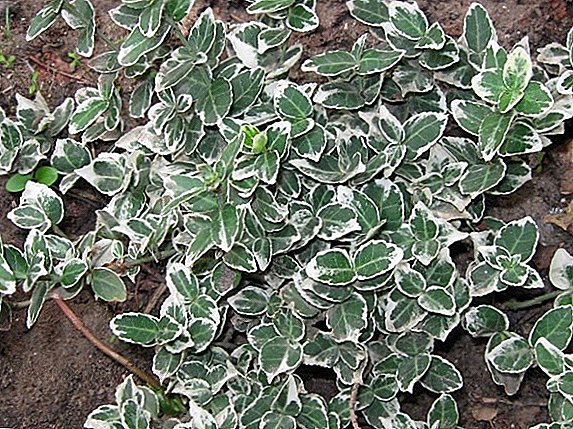
Home care
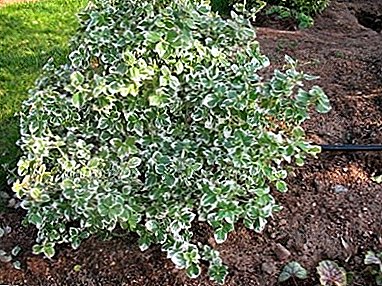 Shrub is considered resistant to external environmental factors, but in order to unleash his power, he needs proper care.
Shrub is considered resistant to external environmental factors, but in order to unleash his power, he needs proper care.
Due to its slow growth and year-round decoration, it can be maintained both in open and protected ground conditions.
At the same time, the methods of care differ from each other, and consist of several techniques and rules.
Actions after purchase
Forchun's Euonymus is purchased in a pot. When buying it, you need to carefully consider the presence of pests and diseases.
Further, the shrub is planted in a permanent place. Planting rules are no different from transplantation, but after that the plant is not fed when watering until the root system takes root.
Pruning
The growth of shrubs is very fast. To form the necessary form, produce its periodic pruning. As such, formative pruning is not needed, but the aesthetic form is attached to the removal of dead and protruding branches.
Watering
"Euonymus" is characterized by drought resistance, and does not tolerate stagnant moisture. Water the plant should be on the principle - it is better to water less than pour "in reserve."
But the watering of young plants should be monitored, and more often due to a weaker root system.
Reference! In summer, the bush does not require high humidity, but it needs periodic sprinkling in the greenhouse.
In winter, in conditions of closed ground and reduced temperature, watering is reduced, and in the summer they make sure that the soil in the container does not dry out.
Transfer
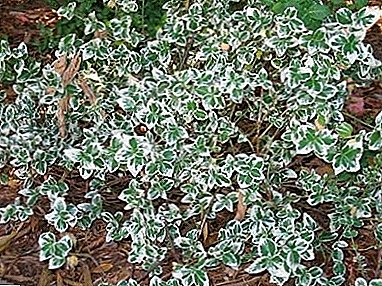 Shrub transplant in spring or autumn. To do this, prepare the hole in excess of the earthy ball, located on the roots, twice.
Shrub transplant in spring or autumn. To do this, prepare the hole in excess of the earthy ball, located on the roots, twice.
The soil extracted from the fossa is mixed with a well-rotten compost.
Extraction of the seedling from the pot or the previous place is done carefully, and the planting is done to the same depth as before.
After planting, the soil is compacted.
Growing up
Adult shrubs are watered up to four times during the season, young ones are more often more abundant, especially during the drought period. The compacted soil is loosened and regular mulching with peat mixture is carried out to a depth of 6 cm.
In winter, young plants (up to 2 years old) are covered with dry leaves, and more adult cover is not necessary. Autumn is digging, under which add slaked lime.
Breeding
The easiest way to propagate "Euonymus" rooted shoots. If you press a branch to the ground, it releases roots in this place.
After a certain time, it is cut off and transplanted to a new place. To make the process quicker, the pressed shoots sprinkle with soil a little.
Another method of vegetative propagation is grafting. For this purpose, it is not young shoots that are selected and are cut with a pruner at an angle of 45 ° up to 12 cm long. The cuttings are planted in a wet soil mixture, and a rooting plant is used for better survival.
Reproduction of euonymus seeds is possible. To this end, in the first half of spring, beds are sown to a depth of 2 cm in a special substrate.
It is prepared by mixing one part of sod land, two parts of humus and one sand. The emergence of seedlings occurs on average after 20 days.
Indoor sowing is done at the end of January, while by the end of the summer you can get stronger seedlings, giving a natural growth.
Temperature
The plant prefers a moderate temperature, in summer up to 25 ° C, and in winter about 8 ° C, but not higher than 12. It is well tolerated not by extreme cold, but too much heat affects the plant negatively.
Important! In winter, the temperature inside the room where the spindle tree is located should be no higher than 16 ° C. If it rises more than + 20 ° C, the shrub drops leaves.
Lighting
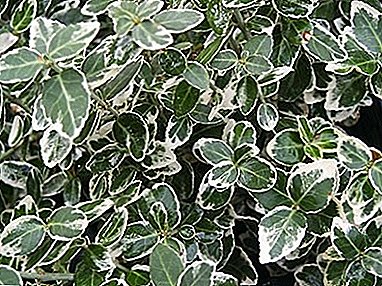 The plant loves direct sunlight, under the action of which the leaves acquire a bright spotted pattern.
The plant loves direct sunlight, under the action of which the leaves acquire a bright spotted pattern.
But it is better that direct exposure to the sun occurs in the morning or in the evening.
Guided by this rule, you need to choose a suitable place to place an euonymus.
The lack of light is very noticeable in winter in greenhouse conditions.
At the same time leaves turn yellow and growth. During this period, the use of additional lighting special lamps.
Benefit and harm
“Euonymus” as an ornamental plant grows well both on open balconies and terraces, personal plots, and in parks, squares, near monuments, office buildings, and other urban landscaping objects, without requiring special care.
The only disadvantage is its pest infestation.in which the shrub will act as a breeding ground for harmful insects. This is easily prevented by conducting regular plant surveys and timely processing with pesticides.
Diseases and pests
Forchun's euonymus, like other garden plants, is affected by certain pests and diseases.
To combat them use chemical means of struggle and gardening techniques:
- When powdery mildew, which looks like a white or brown-gray bloom on the leaves, are treated with a fungicide. Traditionally this is done by the safest remedy, Bordeaux liquid. But it is allowed to use specialized means with greater efficiency. In focal lesions, diseased branches are removed.
With the defeat of spider mite, which is determined by the appearance of silver dots on the upper side of the sheet, and the bottom with traces of spider webs, treatment with acaricide is performed. Colloidal sulfur is considered the most environmentally friendly product; - With the defeat of other pests - Aphids, mealybugs or caterpillars use standard garden protection against pests. Inspection of plantings should be carried out regularly, since the defeat of the shrub by insects occurs more intensively in comparison with other garden plants.
Important! Infection of Forchun's euonymus by fungal microorganisms provokes increased humidity, which is caused by frequent top watering of the plant.
It is possible to reduce the likelihood of powdery mildew during spring preventive treatment with a fungicide and placing the shrub in a sunny place.
Forchun's euonymus is a plant that is gaining popularity for landscape design, but so far undeservedly rarely used for landscape design on personal sites.
Resistance to cold winters and the ability to tolerate drought along with the lack of need for special care put it in a more advantageous position with other shrub crops used to create all sorts of floral installations and ensembles.


